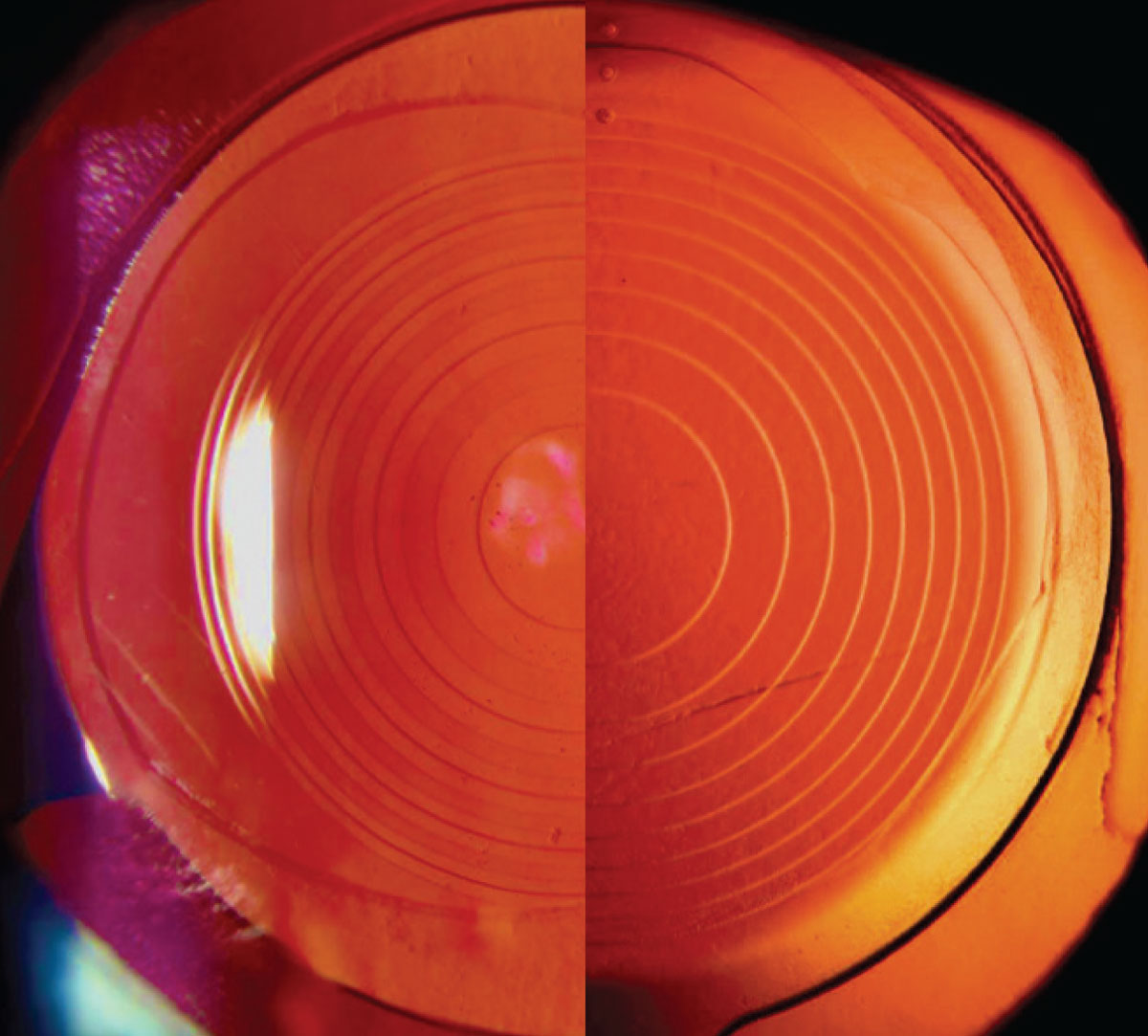 |
|
Side-by-side view of a trifocal (left) and EDOF (right) IOL. This lit review found patients with trifocal IOLs had improved uncorrected near visual acuity and reduced spectacle independence. Photo: Oliver Kuhn-Wilken, OD. Click image to enlarge. |
With so many new intraocular lenses (IOLs) on the market, it can be difficult to decide which will offer your patients the best visual and safety outcomes. To help inform these decisions using clinical data, researchers performed an electronic search to compare the performance of two emerging types of IOLs—trifocal and extended depth of focus (EDOF). They concluded in their paper in American Journal of Ophthalmology that compared with EDOF lenses, trifocal IOLs resulted in improved uncorrected near vision, although distance and intermediate vision, halos and glare were not significantly different between groups.
The systematic review and meta-analysis identified 22 studies from various electronic databases, including 1,206 patients (2,200 eyes) who underwent cataract surgery and had a trifocal or EDOF IOL implanted. Six studies were randomized clinical trials and 16 were non-randomized.
“Trifocal IOL showed a significant improvement in sphere and spherical equivalence compared with EDOF IOL,” the researchers wrote in their paper, adding that they observed no difference in cylinder or astigmatism. The trifocal IOL outranked the EDOF lens in superior near visual acuity outcomes, especially uncorrected and distance-corrected near vision. However, the EDOF group had significantly improved postoperative corrected distance visual acuity compared with the trifocal group.
Another outcome measure favoring trifocal IOLs was the quality of vision questionnaire, completed by 294 patients across the studies. Patients with trifocal lenses scored higher than those with EDOF lenses. The trifocal group also had improved spectacle independence. The researchers noted in their paper that “significantly more patients in the EDOF group reported requiring spectacles for near work (48% EDOF IOL vs. 12% trifocal IOL).”
No difference was noted between the two lenses in terms of the following: post-op uncorrected distance visual acuity, uncorrected intermediate visual acuity, distance-corrected intermediate visual acuity, ocular aberration, contrast sensitivity, halos, glare or patient satisfaction.
“Taking into consideration the results of this meta-analysis, both EDOF and trifocal IOLs provide comparable performance in intermediate visual acuity and distance,” the study authors summarized in their paper. “However, trifocal lenses had significant improvement in postoperative refraction, especially in sphere and spherical equivalence, as well as near visual acuity. Overall, the use of trifocal vs. EDOF IOLs should be based on an individual basis and the clinician’s judgment.”
Karam M, Alkhowaiter N, Alkhabbaz A, et al. Extended depth of focus versus trifocal for intraocular lens implantation: an updated systematic review and meta-analysis. Am J Ophthalmol. February 1, 2023. [Epub ahead of print]. |


